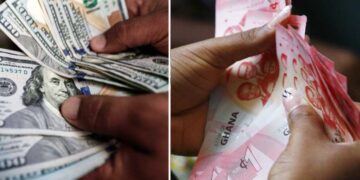The Summary of Economic and Financial Data by the Bank of Ghana has revealed that Ghana’s public debt stock shot up from ¢40.1 billion to ¢391.9 billion as of the end of March 2022.
According to the data, the increase in the debt is due to largely exchange rate fluctuation and to some extent borrowings from the domestic market. In the first quarter of 2022, the cedi assumed a free fall to the dollar, but its depreciation was halted in April 2022, following monetary measures by the Bank of Ghana.
However, in relation to the Gross Domestic Product of the country, the debt was estimated at 78%. This is slightly lower than the 80% recorded in December 2021.
According to the figures, the debt inched up by ¢20.5 billion in January 2022 and subsequently ¢19.7 billion in February 2022.
In terms of the domestic debt, it went up by ¢8 billion in the first quarter of 2022 to ¢189.9 billion in March 2021. This is equivalent to 37.8% of GDP.
Also, the external component of the total public debt shot up to $28.4 billion (¢201.9 billion) in March 2022, from $28.1 billion in December 2021. From the figures, clearly one can deduce that there were no borrowings from the external front in the first quarter of this year.
The debt-to-GDP ratio of the external debt is however approximately 40.2% of GDP.
The cedi component shot up by ¢31.9 billion in the first three months of 2022, primarily due to the decline in the value of the cedi to the dollar during the period.
On the other hand, the financial sector resolution bond went down to ¢14.6 billion in March 2022, from ¢14.9 billion recorded in December 2021. This is equivalent to 2.9% of GDP.


















